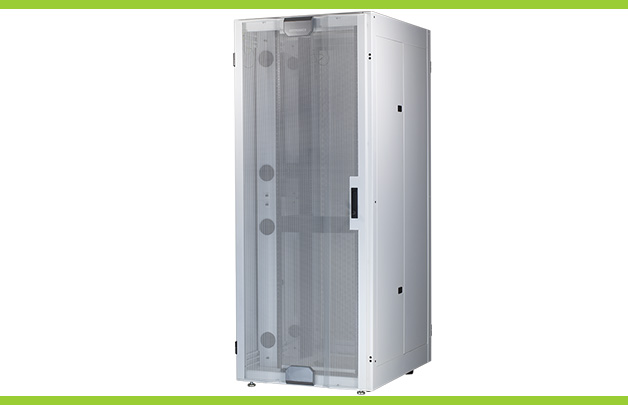The Raritan Blog
Home » Raritan Blog » Cost Savings with Micro Data Centers
Cost Savings with Micro Data Centers
Reegan Barnett
May 4, 2018

Major changes in data centers operations have historically involved the location of data processing. At one time, this function was moved off-site to mainframes, but the advent of microcomputers, now known as desktops or PCs, brought data processing back to the customer’s own data center. Cloud servers and collocated data centers resulted in data processing being performed off-site once again.
Today, some organizations are using micro data centers to process data on their own premises. This solution can provide performance improvements that justify the initial expense of a data center and has the potential to gain wide acceptance in the near future.
Overview
The term “micro” clearly indicates that micro data centers are smaller than a typical data center. However, no standard definition of this term currently exists due to the great variation in data center sizes. For example, some of the largest IT enterprises have data centers that consume 50 to 100 megawatts (MW). The managers of these facilities would probably consider a 1 MW data center to be quite small, although this size would seem very large to a small business owner.
Some IT leaders who use the term “micro data center” are referring to the data center’s physical size rather than its consumption of electrical power. Such a facility might be found in a commercial office building with the same look and feel as a traditional data center, but with less floor space.
However, we will define a micro data center as a self-contained computing facility that includes all the equipment needed to run the user’s applications. This type of data center is assembled within a single enclosure at a factory, along with the necessary power, cooling, and security equipment. This enclosure is then shipped to the customer’s site before being deployed.
These data centers typically have a maximum of 10 racks and are available in a variety of sizes and form factors. They’re most suitable for performing a broad range of applications at low latency and high bandwidth. The advantages of a micro data center include a low capital expenditure, small footprint, and rapid deployment.
Savings
Micro data centers can yield a cost reduction of 50 percent over a traditional data center under ideal circumstances. This savings results from a micro data center’s ability to tap into an existing facility’s electrical power to operate its equipment. Facility-level systems typically have an excess electrical capacity that may be adequate to run the micro data center.
Assume for this example that the electrical power required by a 1 MW data center costs $1.08 million per year, for an average of $10.80 per watt. A micro data center is deployed in this facility, which contains 1 rack, along with an intelligent PDU, cabinet, and management software. This micro data center uses about 5 kilowatts (kW) of power per year, but the average cost is only about $5 per watt, primarily because the cost of controlling the ambient temperature is already borne by the facility. The micro data center’s power cost on a per watt basis is therefore about half that of the primary facility.
This savings can be further increased due to the rapid increase in servers' processing capabilities. In the case of an older facility, a single rack of new servers may have same be able to take the place of 5 to 10 racks of existing servers. Increasing capacity in the future can be as easy as just adding another micro data center. This strategy provides benefits similar to that of distributed architecture since you only need to scale up as needed. To learn more about outfitting your data center with the correct PDU visit our website, here.
Other Blog Posts
- Who Should Care About ISO 27001?
- Posted on April 30, 2024
- The Rapid Growth of AI and the Use of Raritan PDUs to Meet Higher Power Demands
- Posted on October 11, 2023
- Data Center Report Fewer Outages, But Downtime Still Costly
- Posted on September 20, 2023
- Survey: Energy Usage and Staffing Shortages Challenge Data Centers
- Posted on September 20, 2023
- Raritan Secure Switch: Secure NIAP 4.0 Compliant Desktop KVM
- Posted on September 20, 2023
Subscribe
Upcoming Events
- Advancing Data Center Construction West 2024
- May 6 – 8 • Salt Lake City, UT
- Net Zero Data Center
- May 16 – 17 • Dallas, TX
- 7x24 Exchange Spring
- June 9th • JW Marriott Orlando Grande Lakes
Latest Raritan News
- Legrand Certifications and Process Controls Provide Confidence in Information Security for Network-Connected Devices in Data-Related Applications
- Posted on April 1, 2024
- Legrand Releases Version 4.0 of Raritan’s Industry-Leading Secure KVM Switches, Raising Bar for Secure Desktop Access
- Posted on July 31, 2023
- Legrand Revitalizes Data Center Sector with Two Revolutionary Intelligent Rack PDUs
- Posted on May 1, 2023
- Raritan Reveals The MasterConsole® Digital Dual KVM Switch
- Posted on February 18, 2021
- Legrand Data, Power and Control Division Announced as Finalist in Six Categories at DCS Awards 2020
- Posted on November 9, 2020